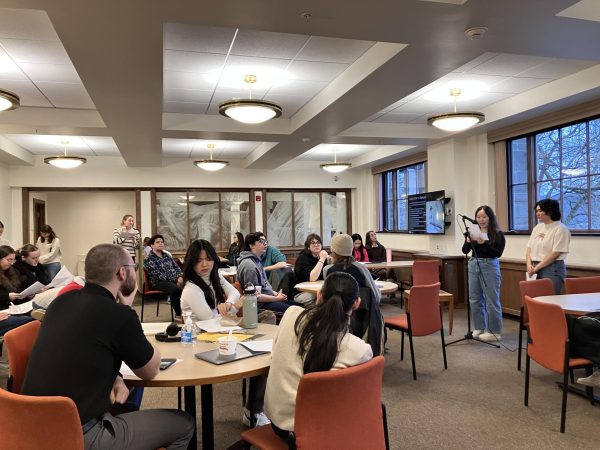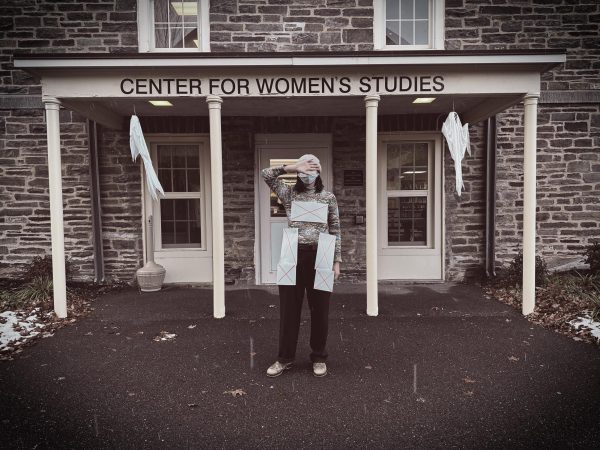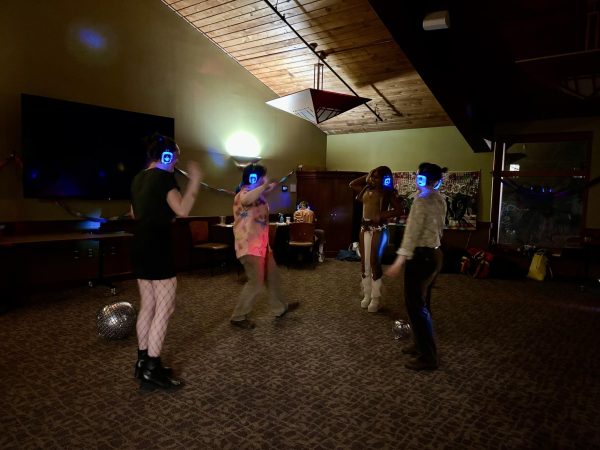Art Historian Speaks of Earthworks
On Wednesday, September 24th, 2014, art critic and professor James Nisbet gave a lecture. Nisbet is an assistant professor at the University of California, Irvine where he specializes in modern and contemporary art. More specifically, he is interested in land art (earthworks), minimalism and how these works relate to the world we live in. He recently wrote a book titled “Ecologies, Environments and Energy Systems in the Art of the 1960s and 1970s,” which served as the basis for his lecture.
Professor Daniel Hackbarth introduced Nisbet, noting that his approach to studying and writing about art has three main descriptors; it is methodological, thorough and original. Hackbarth mentioned that Nisbet writes for Art Forum, and that his writing is read by other historians and critics. He also noted that Nisbet’s focus is mostly on art around where he lives in Los Angeles.
Nisbet began his talk by speaking about earth art, artworks that actively use the landscape and the environment as either their medium or a means for shaping their medium. This was something that started in the 1960s, where artists such as Robert Smithson and Richard Long began to create works directly on the surface of the earth. Long took various liquids and poured them onto the earth. Eventually, the liquids would set, and the artwork would be formed.
The piece Smithson is most known for is the Spiral Jetty, which is located on the Great Salt Lake in Utah. The piece is constructed of mud, precipitated salt crystals, rocks and water. It is a large spiral shape that juts out from the coast; Nisbet described this work as minimalist in principle due to the simple nature of its aesthetic. The only way to see this work is to go to the location. He said that although he enjoyed visiting the work, it did not fundamentally change his idea of the work like visiting other sites, such as Walter de Maria’s Lightning Field did.
According to Nisbet, land art is essentially minimal art integrated into the landscape. He used images of the work of artist Robert Morris to make an argument about the object-like quality that most minimal art is known for. The goal of Morris’ work is to make us see his shapes in relation to us and the gallery we inhibit. This is similar to the way in which Smithson’s work is viewed, as its form is its content, and its content is its form.
One piece that Nisbet focused on was called “Double Negative” by Michael Heizer. It is located near Overton, Nevada and was created in 1969. This work is located on a mesa, which is a giant bed of rock. Heizer cut into the rock and created a giant trapezoidal object. One result of being inside of this object is it allows the viewer to create a relationship between themselves and the space they occupy, which was otherwise not possible in the vast open space where the work is.
The main point of Nisbet’s lecture was to situate some of well known earthworks by putting them into a cultural and ecological context. Nisbet was able to do this by comparing them to other artworks, as well as Stanley Kubrick’s film, “2001: A Space Odyssey.” His argument was polished, interesting and well thought out.




